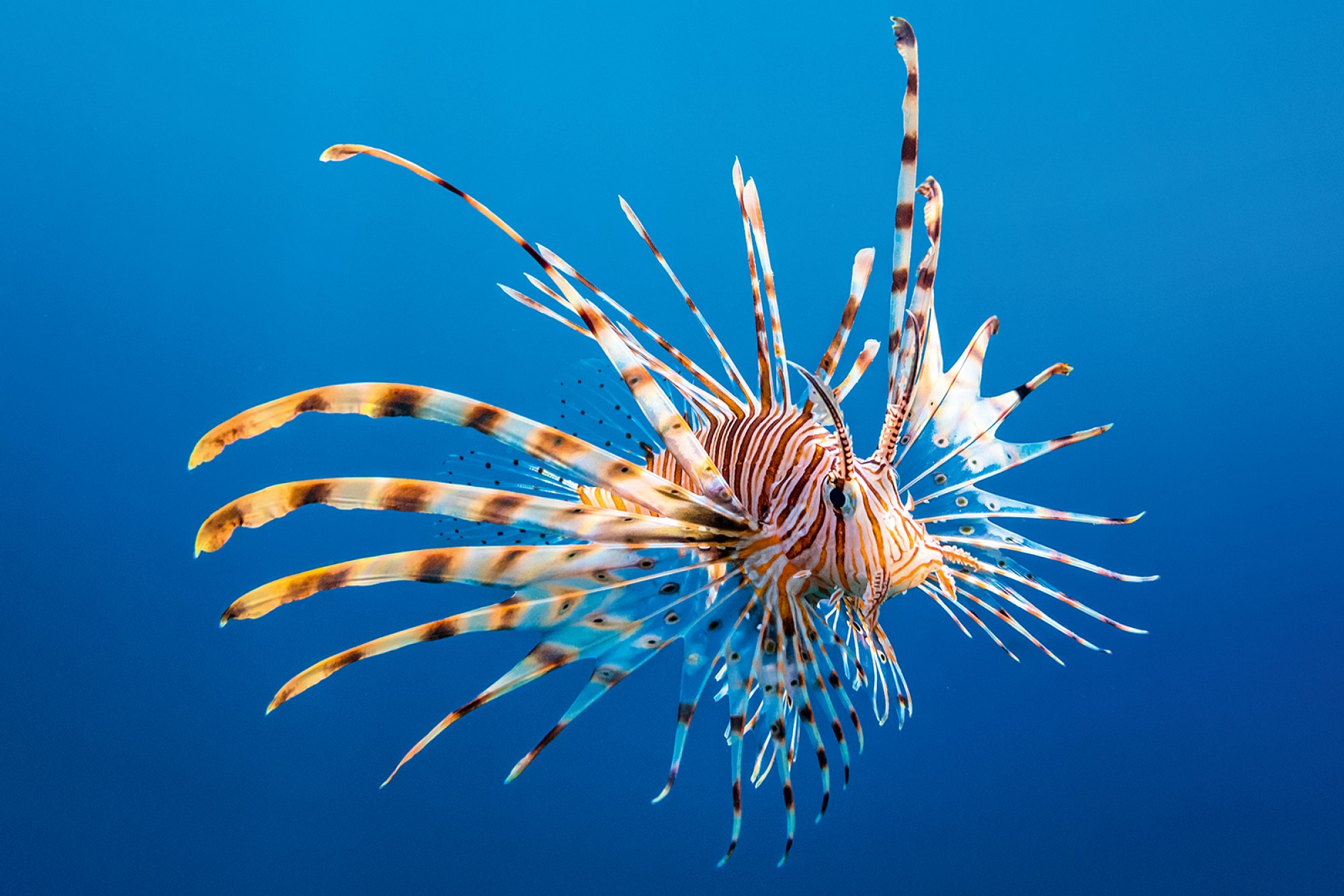Diving with Lionfish
The Beauties of the Ocean
Lionfish are native to Indo-Pacific waters and are usually found hiding under ledges or in shallow caves at depths between 2 and 60 meters. They are diurnal, meanings they hunt both during the day and at night but often stay hidden until sunset to avoid predators. Unfortunately, lionfish have become an invasive species in the western Atlantic Ocean and Mediterranean Sea. In fact, despite their menacing beauty, lionfish have become a huge problem in the Caribbean as their population has spread tremendously in just a single decade. In fact, the Science Channel has claimed they are “one of the most aggressively invasive species on the planet.” These flashy predators are considered fairly aggressive and harmful to humans so take caution when diving with lionfish and keep a safe distance.
Also known as the zebrafish, turkeyfish, or butterfly-cod, lionfish are easily identified by their distinctive red, white, and black stripes, prominent pectoral fins, and venomous, spiny fin rays. There are currently 12 different species of lionfish, two of which have invaded Atlantic waters. If you are interested in diving with these stunning predatory fish, click on the map below to explore dive sites around the world where lionfish can be found.
Dive Sites with this Animal View more on map

★★★★★ Fenfushi Giri
If you want to see anemones you have to come to this place,, there is a field with hundreds of anemones where we also can always find turtles. The Giri has approx. a diameter of 120m and is easy to dive around. Some nice small overhangs

★★★★☆ Neyo Kanmathi
The reef top has something of a lunar landscape, despite or precisely because of this it is often a very special dive. The northern side often serves as a starting point when the current is draining from a steep wall over a sandy plateau to a normal slope. Manta rays between the end of September and November

★★★★☆ Kottefaru Kanmathi
A very nice drift dive over several hundred meters along the island of Kottefaru. The top reef is made of hard corals that drop from 4 to 8m, sloping down to 15m, then a wall that drops far more than 30m. On the top reef between June and November the site becomes a cleaning station for mantas.

★★★★★ USAT Liberty Wreck
This is the only historical shipwreck in Bali, ranked #3 in the world for Wreck diving! The wreck is 25 meters form shore at a depth of 4 to 29 meters below the surface with most of it occuring in a shallow area. This dive site does not have strong currents, has clear water, and warm temperatures. Difficult entry!

★★★★★ Tri Mix
The top reef starts at 3m to 6m and fall as a wall down to 25/30m On this protected wall you will find a lot of small stuff but also bigger ones. The big ones are on the ground, in the small overhangs or in the mini cavern. nice and easy for all level

★★★★☆ Lankan Beyru
Lankan is a cleaning station for manta rays and scuba divers visiting often get to see an amazing manta show, one of the highlights of any trip to the Maldives.
